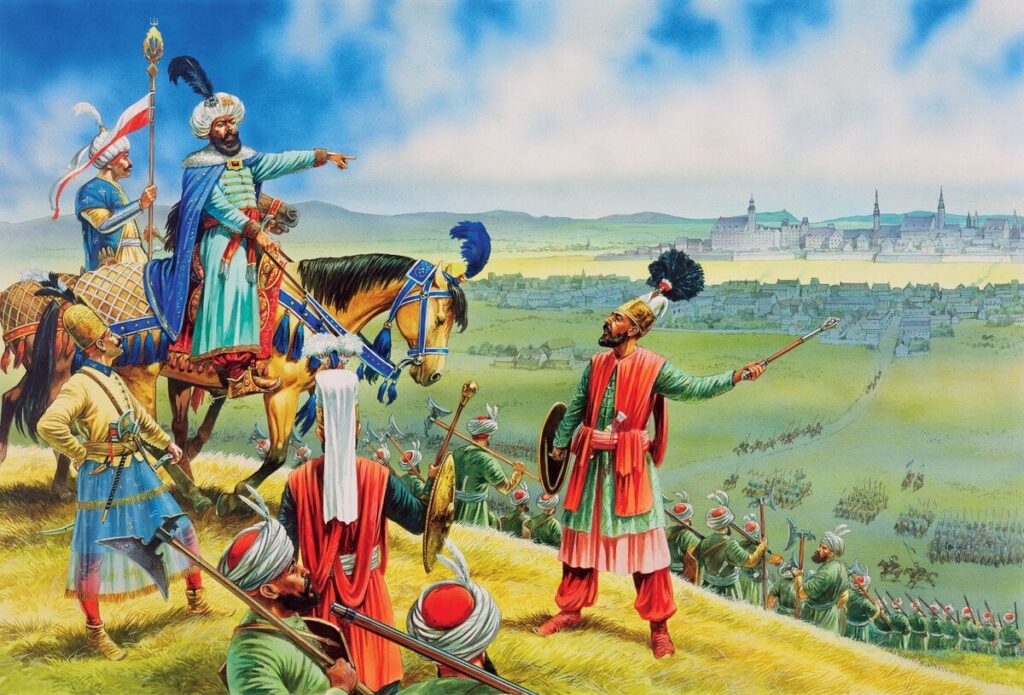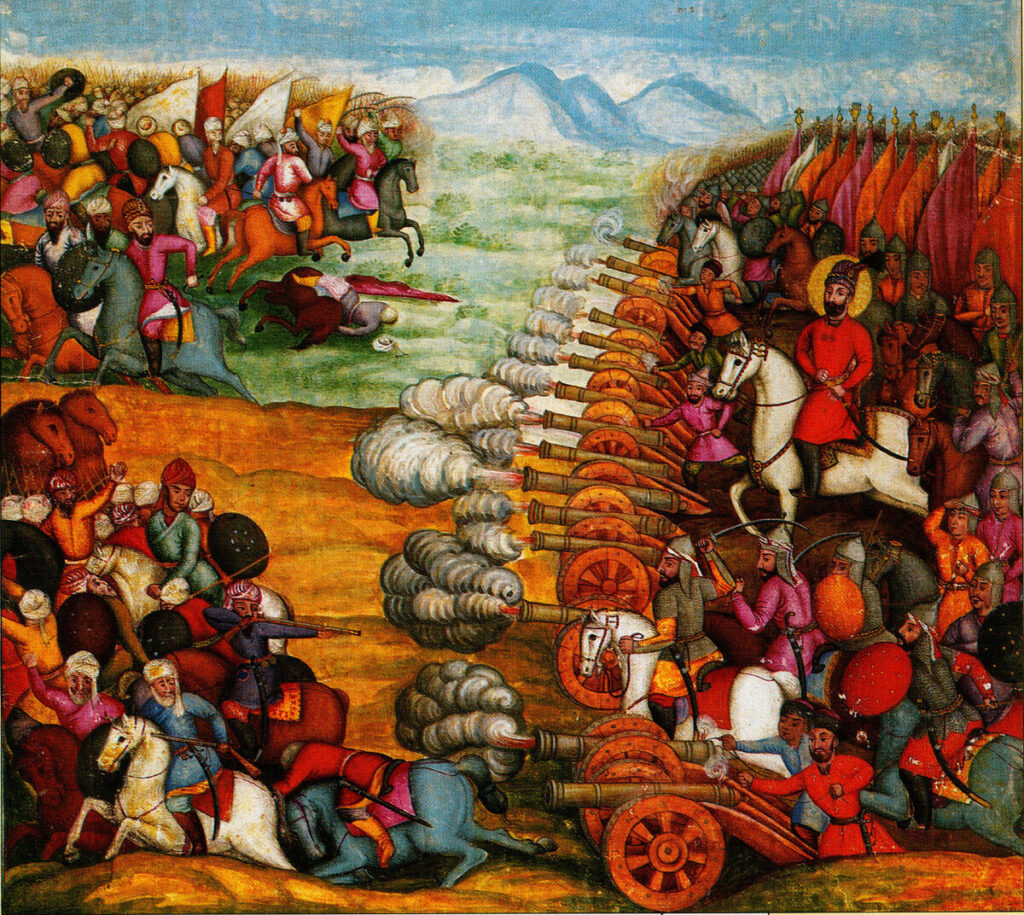Few people remember this now, but the Ottoman Empire began with 500 soldiers who fled from the Mongol invasion, who received lands in Anatolia from the Seljuk sultans. These people created the westernmost of the Turkish principalities, which for this reason almost did not fight with Muslims for a long time. Because of this, brave batyrs flocked here who wanted to turn their weapons against the infidel Greeks, which at first became a serious military aid for the Ottomans.
Successful wars in Europe led to their military and political dominance in the post-Seljuk world. And subsequently, to the emergence of a powerful Islamic state, which united a significant part of Southern Europe, the Middle East and North Africa in just a hundred years.
At the peak of its power, European Christians dared to resist the Ottoman Empire only as part of a large coalition, if possible involving the Iranian Turks in it – and even then the war did not promise to be successful. However, there were nations that managed to fight back and stand up in confrontation with one of the greatest states of the gunpowder era.
Which ones?
At the end of the 15th century, Hungary and the principalities of Moldavia and Wallachia remained the last independent Christian countries on the Balkan Peninsula. The Hungarian kingdom will fall before in 1526 and will be divided between the Turks and Austrians, but the Romanian states will resist very stubbornly. Despite the obvious disparity of forces, the Moldovan ruler Stephen III the Great and his Wallachian colleague Vlad III Tepes, better known as Dracula, will inflict many humiliating defeats on the Ottomans and will be able to defend the freedom of their native land. In order to avoid the ruin of their possessions, their heirs will agree to the recognition of nominal Turkish suzerainty. However, Istanbul’s rule will be intangible and ephemeral – only in the 18th century direct rule of the Turks will be introduced in Wallachia, and Moldavia will be divided by the Austrians and Russians.

In the 1520s, Austria was only at the beginning of its path to world power, although it represented the richest principality of the Holy Roman Empire. Its ruler managed to become the German emperor, and the descendants of this man will consolidate their power. Nevertheless, this was not enough to face the Turks on equal terms, who besieged Vienna in 1529. In addition to a small local contingent, the city was defended by Spanish and German mercenaries – experienced seekers of money and luck, as well as citizens and farmers mobilized for the occasion. All together, there were about twenty thousand of them, and there were about six times as many soldiers in the Turkish army. Despite the fact that they were led into battle by the young and ambitious Sultan Suleiman the Magnificent, several attempts at an assault did not lead to success. The Janissaries were promised to pay six times, but all their attacks were repelled by landsknechts and arquebusiers. And then, for the first time, they refused to climb the walls, although they had previously demanded to go on the attack – this was the first Janissary riot in history.

The Polish-Lithuanian Commonwealth of the 17th century was a large and strong European state, whose military power was based on excellent cavalry – the famous winged Hussars. The most serious war in their common history and the first war in a hundred years began in 1620 and became part of the Thirty Years’ War in Europe. The young Bogdan Khmelnitsky, among others, had a chance to participate in it. After several defeats, the Ottomans were stopped by the Polish-Cossack army at the Battle of Khotyn. Despite the popular uprising, the war with Russia and the Swedish invasion, Poland was strong even at the end of the century. In 1683, her hussars defeated the Ottoman army in the Second Battle of Vienna — this battle is considered one of the largest heavy cavalry attacks in history.

Despite their common origin, the Ottoman Empire has always been at odds with the Iranian Turks. And when those under the Safavid dynasty converted to Shiism, this confrontation became especially grandiose. The Iranians have experienced several full-scale Turkish invasions, during which they have repeatedly lost their capital. At the beginning of the 18th century, another crisis in the history of their state began – the Turks then briefly occupied Azerbaijan and Western Iran. But the neighbors fought back already under the next dynasty – the military commander Nadir Shah defeated the Ottomans and occupied the entire Caucasus and Iraq.

Despite several invasions from sea and land, the Turks were never able to capture Morocco – this country took advantage of its geographically protected position and concluded military alliances with the Spaniards and Portuguese. Several times its sultans went on the offensive – they responded with raids on the Algerian coast, during which thousands of janissaries were sent to heaven. In the end, what did not work out by washing turned out to be rolling – the candidate for the throne of Morocco took advantage of the help of the Ottoman Empire in the struggle for power. After that, he recognized his vassalage, but the dependence was purely formal.

The central part of the Arabian Peninsula was not much interested in Istanbul, unlike the Muslim holy sites located near the coast. The policy of non-interference allowed the emergence and strengthening of Saudi Arabia, whose rulers acted in alliance with the Wahhabi religious movement. As a result, at the end of the 18th century, the Saudis managed to occupy the holy cities and the entire Hejaz. In 1810, this led to a military invasion by the Egyptians, sanctioned by the empire – troops from the land of the Pyramids eliminated the hostile state under their noses and occupied the interior of the peninsula. But they were soon forced to leave due to logistical problems and a difficult climate. And after that, Saudi Arabia recovered quickly. A hundred years later, she led an Arab uprising against the Ottomans.
